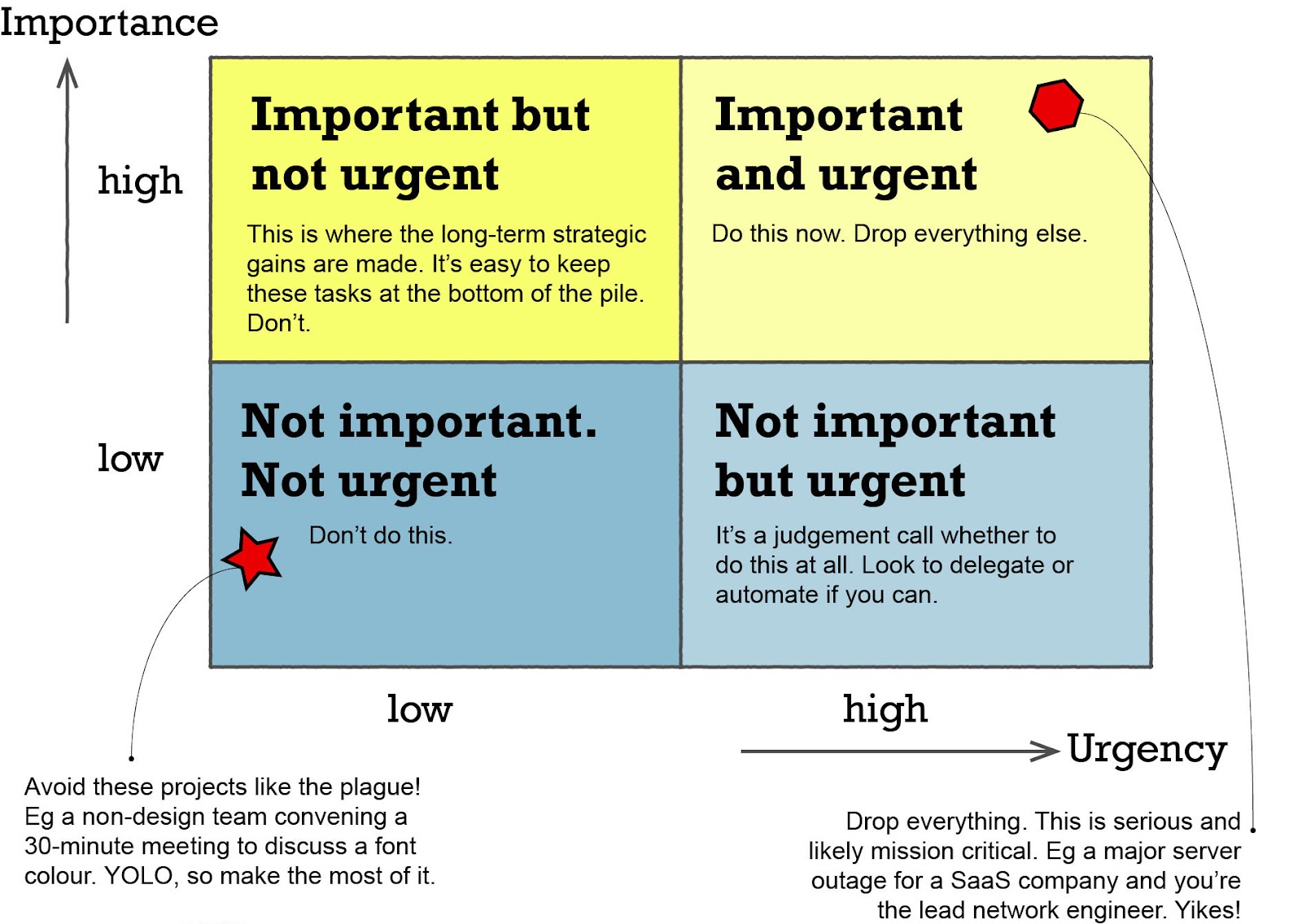The Eisenhower Matrix, also known as the Urgent-Important Matrix, is a time management tool that helps you prioritize tasks based on their urgency and importance. The matrix is named after Dwight D. Eisenhower, the 34th President of the United States, who was known for his exceptional ability to manage his time and get things done.
The matrix is divided into four quadrants, each representing a different combination of urgency and importance:
- Quadrant 1 (upper left): important and urgent. These are tasks that require immediate attention and have clear consequences if not completed. Examples include emergencies, crises, and pressing deadlines.
- Quadrant 2 (upper right): important, but not urgent. These are tasks that are essential for achieving long-term goals but do not require immediate action. Examples include planning, relationship building, and personal development.
- Quadrant 3 (lower left): not important, but urgent. These are tasks that demand immediate attention but do not contribute to long-term goals. Examples include interruptions, some emails and phone calls, and some meetings.
- Quadrant 4 (lower right): neither important nor urgent. These are tasks that do not contribute to long-term goals and do not require immediate attention. Examples include time-wasters, trivial activities, and some entertainment.
To use the Eisenhower Matrix effectively, start by listing all of your tasks and categorizing them into one of the four quadrants. Then, prioritize your tasks based on their quadrant:
- Do the tasks in Quadrant 1 first.
- Schedule time for the tasks in Quadrant 2.
- Delegate the tasks in Quadrant 3 if possible.
- Eliminate the tasks in Quadrant 4.
By using the Eisenhower Matrix to prioritize your tasks, you can focus on what’s truly important and urgent while avoiding distractions and time-wasters. This can help you be more productive and achieve your long-term goals.
